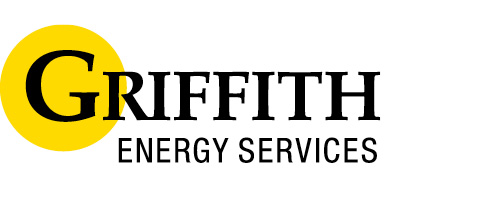Carbon monoxide (CO) represents one of the most dangerous hazards in your home, and the only way to assure your family’s safety is with carbon monoxide detectors. CO forms when fossil fuels don’t have all the oxygen they need for full combustion. The resulting CO is odorless and colorless, and the only way to know it’s present is with a detector.
Dangers
Carbon monoxide is such a danger in homes because a molecule of CO is slightly smaller than air and it rapidly replaces the oxygen in the bloodstream, eventually causing suffocation. Even if levels don’t reach that high, low exposure to CO can damage your health, especially for populations at risk, including the elderly, those with heart conditions, infants and pregnant women.
The Consumer Products Safety Commission reports that levels around six parts per million (ppm) are tolerable for continual exposure, but levels that reach 70 ppm can create discomfort for people with heart problems. As levels climb, anyone can experience fatigue, nausea and headaches. When they reach 150 to 200 ppm, continued exposure can be fatal.
The Underwriters Laboratories (UL) set the standards for the activation of carbon monoxide detectors based on the level in the air and the amount of time the level stays higher than healthy levels. A brief rise to 70 ppm may not trigger an alarm if the level falls quickly. The UL requires the alarm to sound after five hours at this level. However, if the CO levels rise to 150, it will only take 50 minutes before the alarm sounds. At 200 ppm, the alarm has to sound after 15 minutes.
Sources
Many people think CO is a problem during the winter when the furnace is running, but in fact, it can be an issue year-round. Indoors, CO comes from:
- Any appliance that uses a combustion fuel;
- Fireplaces and ventless heaters;
- Attached garages used for vehicle parking;
- Loose or leaking ductwork when vented combustion appliances are inside the home; and
- Smoke of any kind.
Exposure to CO isn’t limited to the inside of your home. Outdoors, exposure to CO can come from:
- Barbecues and grills;
- Yard equipment that uses a combustion fuel;
- Generators;
- Campfires or backyard fire pits;
- Tent heaters;
- Idling vehicles; and
- Slow-moving or idling boats.
Using Carbon Monoxide Detectors
Where you place the CO detectors makes a difference in their performance. Areas of high humidity, like bathrooms and kitchens, and close proximity to fuel-burning appliances increase the risk of false alarms. Carbon monoxide detectors need to be at least 15 feet from any sleeping area and placed at eye level or higher. CO rises, and if the detector is too low on the wall, it may not sound when levels build.
While putting them higher on a wall is a good idea, try to avoid placing them so high that you forget to check their batteries or it’s inconvenient to do so. CO detectors use more battery power than smoke detectors and should be checked every month or two to verify the battery is operable.
If your home has an attached garage, put the detector near the door going into the house. Each level should have a CO detector. Furnaces and water heaters are commonly found in basements in our area, and if either of these appliances malfunctions, its alarm will alert you to the hazardous situation.
Types of Detectors
Regardless of the type of detector you choose, it should be UL-certified, which means it meets all the standards Underwriters Laboratories set forth for safe operation and detection. You can choose from hard-wired detectors, plug-in models and those that use batteries exclusively. Some detectors will work with home-security systems, sending an alarm to the monitoring station when it triggers.
If you choose hard-wired devices, make sure they have battery backup in the event of a power outage. People often turn to combustion equipment to cook or heat their homes when the power is out, using generators placed too close to the home, or charcoal or gas cooking devices indoors. It’s important that the carbon monoxide detectors work constantly to safeguard your health.
Some detectors have digital displays that show carbon monoxide levels throughout specific periods daily. These are particularly good for homeowners who have aging gas appliances in their homes. These detectors also help emergency responders evaluate the severity of CO exposure, since they can look up the recent history of CO levels in the home.
Most carbon monoxide detectors last approximately five years. It’s helpful to write the date you purchased the devices on them so you know when to replace them.
Avoiding Carbon Monoxide Exposure
No exposure to CO is the best policy, and while some may be unavoidable, ways do exist for you to minimize its threat. Besides using carbon monoxide detectors, staying on top of the appliances that emit CO is the best policy.
Heating Equipment
During the winter, combustion furnaces use by far the most fuel and represent the most potential for CO problems. Since the heating load in our climate can be high, have your heating system inspected annually for efficiency and safety. Your trusted HVAC contractor will check the condition of the burner, the heat exchanger and the flue or chimney, and clean all the parts. He or she will also test it for CO emissions.
Cracks that form on the heat exchanger may emit CO. If the technician finds this problem, the system may have to be disabled until it’s repaired or the furnace is replaced entirely. It may take weeks to get a new heat exchanger, and if the system isn’t under warranty, furnace replacement is often the better option, since new heating systems offer better efficiency, and the labor involved with replacing a heat exchanger is extensive.
Ductwork leaks can pull CO into your home from vented gas appliances, so part of the furnace inspection should include an analysis of the airflow through the system and the ducts. Not only do tight ducts reduce the risk of CO exposure, they also lower your energy bills.
Water Heaters
Gas water heaters must have proper venting to send the combustion gases outdoors. It’s a good idea to have a professional evaluate the operation and venting of the water heater every few years. Not only does it keep you safer, it also prolongs the system’s life.
Cooking Equipment
If you ever notice that the burners or oven for gas cooking equipment burn yellow instead of blue, turn them off immediately. A yellow flame indicates a lack of oxygen to the burner, which can spew CO into your home. If you’re comfortable adjusting the airflow through the gas supply lines, you can change the orifice yourself. Otherwise, contact an appliance repair service to help you.
Lining the bottom of a gas oven with aluminum foil interferes with the combustion process. While it’s a tempting way to keep the oven floor clean, it can raise the amount of CO in your home each time you use the oven. Never use the oven to heat your home during a power outage, since the CO levels will build to unhealthy levels without supplemental ventilation.
Attached Garages
If you run your yard equipment or park your vehicle in the garage, it’s a good idea to use carbon monoxide detectors 15 feet from the connecting door. To reduce any CO from entering the home, make sure the door has weatherstripping around the frame, and the common wall has no air leaks between it and your home. Seal any cracks or crevices with caulk.
Outdoor Activities
- Using a grill or barbecue close to an open door or window can pull CO into your home, as can mowing the lawn or other fuel-powered combustion equipment. Never use these devices in an enclosed space, even with doors and windows open.
- Avoid standing next to a boat whose motor is running or sitting close to the motor in a slow-moving boat. Besides CO exposure, you’ll also be inhaling other noxious compound found in combustion gases.
- Don’t sit close to a campfire or fire pit and never use camping cooking gear inside a tent. Read and follow the instructions for tent heaters before using them.
To learn more about appliance safety, your ductwork’s integrity and carbon monoxide detectors, please contact us at Griffith Energy Services, Inc. We provide superior HVAC services for Frederick, Baltimore, Hagerstown and the rest of the Mid-Atlantic Region.
Written by Kevin Spain



